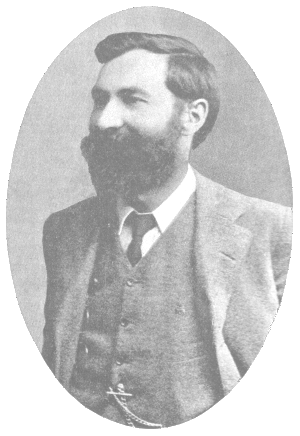
Blarney Castle is a medieval stronghold in Blarney, near Cork, Ireland. Though earlier fortifications were built on the same spot, the current keep was built by the MacCarthy of Muskerry dynasty, a cadet branch of the Kings of Desmond, and dates from 1446. The Blarney Stone is among the machicolations of the castle.

Francis Joseph Christopher Skeffington was an Irish writer and radical activist, known also by the nickname "Skeffy". He was a friend and schoolmate of James Joyce, Oliver St. John Gogarty, Tom Kettle, and Frank O'Brien. When he married Hanna Sheehy in 1903, he adopted her surname as part of his own, resulting in the name "Sheehy Skeffington". They always spelled their joined names unhyphenated, although many sources add the hyphen.
Events from the year 1744 in Ireland.

Sir Francis Patrick Fletcher-Vane, 5th Baronet was an Irish-born British military officer and aristocrat. Francis became the 5th Baronet of Hutton on the death of his first cousin, Sir Henry Ralph Fletcher-Vane, 4th Baronet.
The Colthurst Baronetcy, of Ardrum in the County of Cork, is a title in the Baronetage of Ireland. It was created on 3 August 1744 for John Colthurst, who later represented Doneraile, Youghal, and Castle Martyr in the Irish House of Commons. The second Baronet was an aspiring politician who was killed in a duel. The third Baronet was a member of the Irish Parliament for Longford and Castle Martyr. The fourth Baronet represented Cork City in the British House of Commons from 1812 to 1829. The fifth Baronet sat as Liberal Member of Parliament for Kinsale between 1863 and 1874. He came into the Blarney Castle estate on the death of his father-in-law. The sixth Baronet served as High Sheriff of County Cork. The seventh Baronet was an Army officer in the First World War and a leading figure in Irish cricket. The eighth Baronet was the High Sheriff of County Dublin. The ninth Baronet lived in London and did not use the title. Since 2003, the title has been held by his son, the tenth Baronet, Charles St John Colthurst, who manages the Blarney estate full-time.
Edmund Colthurst was a wealthy English landowner who inherited the former monastic estates of Hinton Priory and Bath Abbey, Somerset, following the death of his father in 1559. He was the son of Matthew Colthurst and Anne Grimston. He married Elinor de la Rivere, daughter of Thomas de la Rivere, with whom he had eight children.
The High Sheriff of County Cork was the Sovereign's judicial representative in County Cork. Initially an office for lifetime, assigned by the Sovereign, the High Sheriff became an annual appointment following the Provisions of Oxford in 1258. Besides his judicial importance, the sheriff had ceremonial and administrative functions and executed High Court Writs.
John Colthurst may refer to:
Sir Nicholas Colthurst, 4th Baronet (1789–1829) was an Anglo-Irish politician.
The Trafalgar Monument is an ornamental tower in Carrignamuck townland, 2.8 km (1.7 mi) north of Coachford village, County Cork, Ireland. It was built by Nicholas Colthurst, who served during the Napoleonic Wars, and was a midshipman aboard HMS Prince during the Battle of Trafalgar. Colthurst continued to serve in the Royal Navy until 1841, retiring with the rank of commander. Parliamentary returns give his date of entry into the Royal Navy as 14 April 1797, promotion to lieutenant followed on 19 September 1806, and his actual date of commission as a retired commander is given as 29 January 1841.

Dripsey Castle is a country house in the townland of Carrignamuck, situated 3.3 km (2.1 mi) north-east of Coachford village and 2.5 km (1.6 mi) north-west of Dripsey village. The house and demesne were dominant features in the rural landscape of Ireland, throughout the eighteenth and nineteenth centuries. Location often reflected the distribution of better land, and this is evidenced in mid-Cork, where many of these houses are situated along the valley of the River Lee and its tributaries.
Clonmoyle House was a country house in the townland of Clonmoyle East, situated 3.9 km (2.4 mi) south-east of Aghabullogue village and 3.4 km (2.1 mi) north-east of Coachford village. The house and demesne was one of several eighteenth and nineteenth century estates built in mid-Cork along the valley of the River Lee and its tributaries.
Matthew Colthurst, of Wardour Castle, Wiltshire and Claverton, Somerset, was an English politician during the reigns of Henry VIII and Edward VI.
Sir George Colthurst, 5th Baronet, was an Irish landowner and politician.
Sir Richard la Touche Colthurst, 9th Baronet succeeded as 9th Colthurst Baronetcy in February 1955 following the death of his father Sir Richard St John Jefferyes Colthurst, 8th Baronet.
Reginald William Richard (Bill) Colthurst (1922–2009) was Archdeacon of Armagh from 1985 to 1989.
James Richard Colthurst is an Irish-born British aristocrat, radiologist, and medical business consultant. He worked as a radiologist at London's St Thomas' Hospital and is a Fellow of the Royal College of Surgeons of Edinburgh. Colthurst was a close friend to Diana, Princess of Wales and served as a "middle-man" between the princess and the writer Andrew Morton, interviewing her for the 1992 book Diana: Her True Story.

Diana: Her True Story is an authorised biography of Diana, Princess of Wales, written by Andrew Morton. The book was published in the United Kingdom in hardcover format on 16 June 1992 by Michael O'Mara Books. The book was controversial as it detailed out Diana's suicidal unhappiness within her marriage and her struggles with depression. At the time of publication, Buckingham Palace denied any cooperation between the princess and Morton, but it was later revealed that Diana was the main source behind the book's content.







